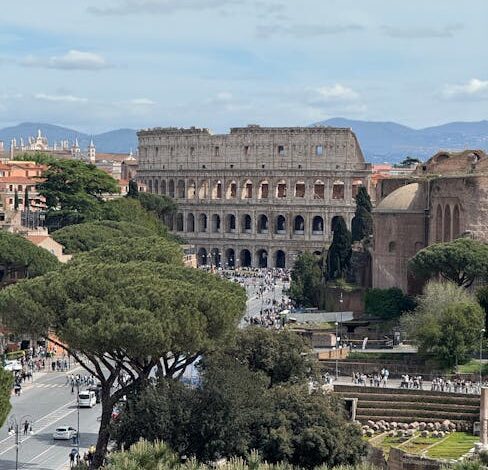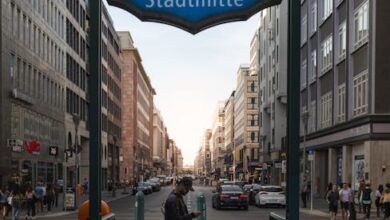The Invisible Gaze: Understanding NYC’s Surveillance Empire

New York City. The very name conjures images of boundless energy, diverse cultures, and a certain gritty freedom. It’s the kind of place where you can truly feel anonymous in a crowd, a liberating thought for many. Yet, beneath the surface of bustling streets and iconic skyscrapers, a complex and often invisible network of surveillance operates tirelessly. It’s a reality many of us are vaguely aware of, but few truly grasp its scale or its implications.
Enter Zohran Mamdani. As an elected official stepping into the fray of NYC politics, he now inherits a colossal task: confronting the sprawling, sophisticated NYPD surveillance state. This isn’t just about a few cameras on street corners; it’s a deep dive into the ethics of technology, civil liberties, and the very definition of a free society in the digital age. It’s a weight that any public servant would struggle with, but for Mamdani, an advocate for progressive change, it presents both a monumental challenge and a unique opportunity.
The Invisible Gaze: Understanding NYC’s Surveillance Empire
When we talk about the NYPD’s “mass surveillance operations,” what exactly does that mean? It’s far more intricate than simply officers patrolling with binoculars. We’re talking about an ecosystem of advanced technologies designed to monitor, track, and analyze citizens in ways that were once confined to science fiction novels. From the pervasive network of LinkNYC kiosks, originally touted for their free Wi-Fi but equipped with cameras and sensors, to thousands of public and private CCTV cameras feeding into police data centers, the visual landscape of the city is constantly being recorded.
Beyond the optical, there’s an extensive web of less visible tools. License plate readers blanket major arteries, logging the movements of vehicles across the city. NYPD officers have used facial recognition technology, often without clear public guidelines or oversight, raising serious privacy concerns. Predictive policing algorithms attempt to forecast crime hotspots, a practice fraught with the potential for bias and discriminatory targeting. Drones are increasingly being deployed, offering aerial perspectives that erase the last vestiges of true public anonymity.
And let’s not forget the digital realm. The NYPD reportedly monitors social media, collecting vast amounts of data on residents’ online activities. This data isn’t just stored; it’s often aggregated, cross-referenced, and analyzed, creating comprehensive profiles that can follow individuals for years. It’s a dizzying array of capabilities, a digital infrastructure that, while ostensibly built for public safety, possesses the power to reshape the relationship between the state and its citizens.
From Public Safety to Public Scrutiny
The stated goal, of course, is public safety. In a post-9/11 world, and in a city that has faced its share of threats, the desire to prevent crime and terrorism is understandable. Proponents argue that these tools are essential for keeping New Yorkers safe, solving crimes, and responding to emergencies more effectively. They point to instances where surveillance footage aided in investigations or deterred criminal activity.
However, the ethical tightrope walk begins when the pursuit of security infringes upon fundamental civil liberties. How much privacy are we willing to surrender for a perceived increase in safety? What are the mechanisms for accountability when these powerful technologies are misused or disproportionately impact specific communities? These aren’t easy questions, and for years, New Yorkers have grappled with a lack of transparency surrounding the full extent and impact of these operations.
Zohran Mamdani’s Crossroads: Reconciling Tech, Rights, and Governance
This is the complex inheritance Zohran Mamdani faces. As a progressive voice, he’s likely to approach this challenge from a perspective that prioritizes civil liberties, transparency, and equity. But dismantling or even significantly reforming such a deeply entrenched system is no small feat. It requires not just political will, but a nuanced understanding of technology, law, and the bureaucratic inertia inherent in large institutions.
One of the primary battlegrounds will undoubtedly be around transparency and oversight. Historically, the NYPD has been resistant to full public disclosure regarding its surveillance tools and practices. Mamdani and his allies will likely push for legislation that mandates public disclosure, requires independent audits of surveillance technologies, and establishes robust oversight mechanisms to prevent abuse. This includes demanding clarity on what data is collected, how long it’s retained, who has access to it, and under what circumstances it can be used.
Drawing Lines: Facial Recognition and Beyond
Specific technologies will also come under intense scrutiny. Facial recognition, in particular, has become a flashpoint for privacy advocates worldwide. Its ability to identify individuals in real-time from vast databases raises profound questions about anonymity and freedom of association. Several cities have already moved to ban or heavily restrict its use by law enforcement, and similar debates are ongoing in New York.
Mamdani’s challenge extends beyond merely stopping the expansion of surveillance. It involves grappling with existing infrastructure and data. It means questioning the very premise that more surveillance automatically equates to more safety, especially when disproportionate impacts on marginalized communities are considered. Studies have shown how predictive policing algorithms can reinforce existing biases, leading to over-policing in certain neighborhoods. This isn’t just about privacy; it’s about social justice.
The task is to redefine what “public safety” truly means in a democratic society, one that values individual rights as much as collective security. It means fostering trust between the police and the communities they serve, a trust that is often eroded by a pervasive and opaque surveillance apparatus. It’s about ensuring that technology serves the people, rather than becoming a tool that subtly controls or intimidates them.
The Path Forward: A Vision for a Truly Free City
Zohran Mamdani’s inheritance of the NYPD surveillance state is a critical juncture for New York City. It forces a long-overdue public reckoning with the technologies we allow our government to wield and the implications of a society where every move, every face, every digital interaction can be monitored. It’s an opportunity to chart a course that balances genuine public safety needs with the imperative to protect civil liberties and foster a truly open, democratic society.
The road ahead will be arduous, filled with complex legal, technological, and political hurdles. But success in this endeavor isn’t just about New York; it sets a powerful precedent for cities across the nation and indeed, the world. It’s about building a future where innovation and progress don’t come at the cost of fundamental human rights. It’s about ensuring that the freedom and anonymity that define New York City remain a tangible reality, not just a nostalgic memory.





